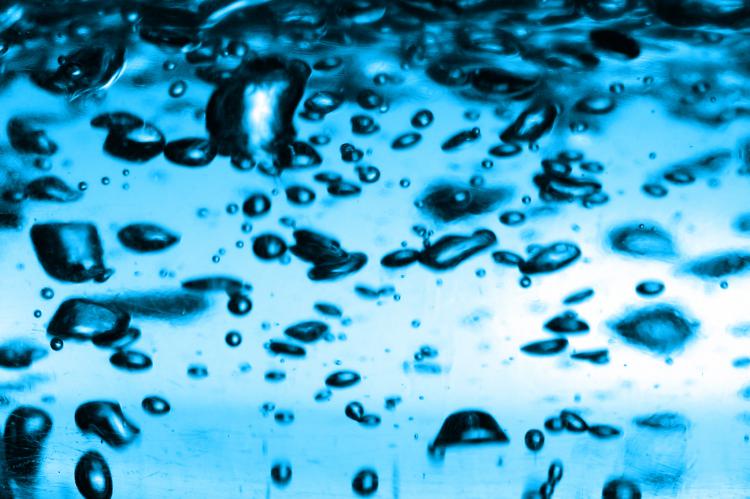Temperature
We have previously looked at the various properties of water which have an effect on aquatic fauna, some of them a bit out of the ordinary, such as surface tension. However, one of the most important
Tags & Taxonomy
As pure water is only a liquid between 0ºC and 100ºC, it is not surprising that life, at least as we know it, which depends on water, is to be found on earth where this condition obtains, though most life on Earth lives at temperatures of less than about 50ºC.
Yet, the so-called hyperthermophiles can live in extremely hot environments i.e. hotter than about 60ºC, with an optimal temperature above 80ºC. The most heat-tolerant hyperthermophile is the recently discovered Strain 121, which can exist at temperatures of up to 121ºC. The toughest hyperthermophiles live on the superheated walls of hydrothermal vents, and require temperatures of at least 90ºC to enable them to survive.
The present temperature of the oceans
The oceans store vast amounts of energy in the form of heat, which has the sun as its primary source. Infrared radiation from the sun plays an important role in that ultimately all the forms of energy in the oceans, such as the long-term circulation and the evaporation at the surface of the sea, depend on input from the sun. There are only two sources of energy that do not depend on solar heating. These are tidal energy derived from the gravitational pull of the sun, moon and—to a small extent—the planets; and geothermal heating through the seafloor from the molten core of the Earth.
The net heat input to oceanic heating is given by the direct solar input and geothermal heating. These are estimated at 150 watts/m2 and 0.01 watt/m2 respectively. So, it is obvious that the geothermal heating is negligible compared with the solar heating. The net heat loss is given by black body radiation (50 watt/m2), the conductive heat loss to the atmosphere (10 watts/m2), and the loss due to evaporation (90 watts/m2).
The amount of sunlight arriving at the sea surface varies, of course, according to the time of day, season, and weather.
The temperature of the oceans is thus given by a dynamic balance between incoming heat and outgoing heat. There are naturally great differences, though, in the temperature of the water between, say, equatorial waters and polar waters, at least for the surface waters. These surface water temperatures range from some 40ºC in shallow tropical lagoons to –1.9ºC (the typical freezing point of sea water) in polar regions. Apart from the Mediterranean and Red Seas, any warm water in the open ocean is restricted to an upper mixed surface layer of about 100 – 200 meters depth.
However, whatever the surface temperatures are, the temperature falls to about 5ºC at about 1000 m depth and thereafter declines slowly to between about 0ºC and 3ºC at greater depths. Even below the hottest tropical regions, the water at a depth of 2000 to 3000 m hardly ever rises above 4ºC. There are, of course, some few exceptions to this, for example the water close to hydrothermal vents where the water can emerge at temperatures of up to 400ºC, although it rapidly cools to the surrounding water temperature of 3 – 4ºC. (See X-RAY MAG issue 5, 2005)
Increasing ocean temperatures
There are various opinions about the magnitude of the temperature changes occurring due to global warming. However, the Intergovernmental Panel on Climate Change, based on a consensus of many hundreds of scientists from many countries, state that the global average surface temperature has increased over the 20th century by about 0.6ºC ± 0.2ºC. It should be noted, though, that this warming has not been globally uniform. The most recent warming has been greatest between the latitudes 40ºN and 70ºN, while the North Atlantic Ocean, for example, has cooled in recent decades.
These temperature changes are, however, still mostly confined to the upper water levels. Work by the Scripps Institution of Oceanography has modelled the time variation of heat content for the various ocean basins. In both the simulations and observations, the heat content in most of the oceans increased only slowly with depth, consistent with a diffusion process. The water had been warmed below about 1000 meters only in the north and south Atlantic, reflecting strong vertical convection there.
The mean daily variation in surface temperature in the open ocean is, however, very small, being generally less than 0.3ºC. Below ten meters depth, there are practically no variations in temperature. Unlike for creatures living in inter-tidal waters, which can be subjected to great differences between day and night-time temperatures, plankton and fish are unaffected by temperature changes over 24-hour periods.
Not only are there vertical changes in temperature, there are also the oceanic currents, which circulate the warm waters and the cold waters. Whilst most marine life has evolved as a function of the environments brought about by these regular currents, irregular currents such as El Niño can cause biological and physical functioning to change quickly over both small and large areas. It can disrupt the whole marine food chain and can be catastrophic for some species such as the Peruvian anchovy.
Although there might be some disagreement about the magnitude of the increase in oceanic temperatures, one thing is certain: even small changes in sea surface temperature can have drastic effects. There will be changes in oceanic circulation patterns, the polar ice will melt (it is already starting to doing so) giving a rising sea level, and giving fresh cold water which, being more dense, tends to sink. These variations in temperature and salinity will control vertical ocean currents. Water temperature also partially determines the concentration of dissolved gases, such as oxygen and carbon dioxide, in sea water. These gases are fundamentally linked to biological processes. All these factors will effect life in the oceans.
Effect of increasing temperature on biological processes
Biological processes, like all other chemical processes, are rate-dependent on temperature, and biological molecules are generally very sensitive to increased temperature levels. The rate of reaction increases with increasing temperature up to a certain point, where either the reaction reaches an equilibrium or the reactants/products decompose. An exaggerated example, perhaps, but just think of a boiled egg where the proteins become irreversibly changed during the four minutes or so at 100ºC.
To counter the effect of high temperatures in nature, the thermophiles, for example, mentioned above, have had to evolve special proteins, as DNA will normally be denatured above 60ºC. Denatured means that the DNA helix strands separate. When double stranded DNA is heated up to between 60 to 80ºC, the two strands unbind into single strands. They will recombine if allowed to cool slowly. Such organisms will probably be totally unaffected by any possible increase in the Earth’s temperature.
The temperature dependence of the rate of chemical reactions
A rule of thumb is that for most simple chemical reactions the rate approximately doubles for every 10ºC increase in temperature. Thus a reaction at 35ºC will go about twice as fast as at 25ºC. However, biological reactions are far from being simple from the chemical-kinetics point of view. The rate of metabolism, as measured by oxygen consumption, of all poikilothermic organisms is greatly increased with rise of temperature. According to van’t Hoff’s rule, the increase is two to three times for each 10ºC rise in temperature within favourable limits. This can be of great consequence for life on earth in the years to come.
Effect of temperature on marine animals
Marine animals, like their terrestrial counterparts, can be divided into four main types with regard to their thermal behaviour.
Firstly, there are the animals whose body temperature varies with the temperature of the surroundings. They are the poikilothermic animals, the so-called cold-blooded animals, (from Greek, poikilos, various), these being the invertebrates and fish. It is well known that different poikilothermic animals differ greatly in their ability to tolerate high temperatures although the time of exposure is also very relevant. This is in part due to the effect of temperature on ....
Download the full article ⬇︎

Originally published
X-Ray Mag #21
Tawali on Papua New Guinea is narrated by Andrey Bizyukin and supplemented with photographs by Wulf Koehler. In the Mediterranean we visit the island of Elba. Leigh Cunningham takes us into a cave under Ras Muhammad (Egyptian Red Sea). Now where things are heating up, learn what Temperature really means. Or what goes on with Sex on the reef. No February issue without Valentines' gifts. We interview Richard Pyle about ecology, rebreathers, Pyle stops and being a nerd.



